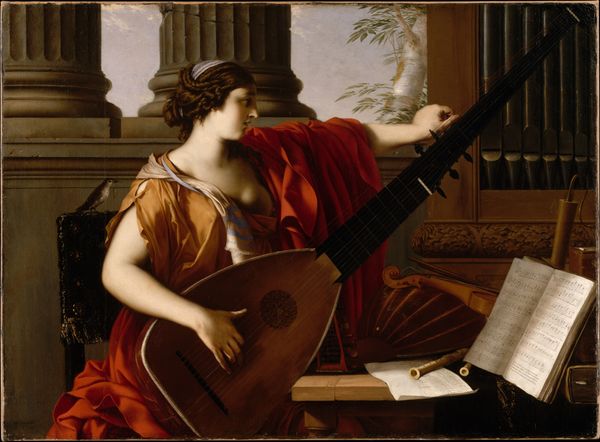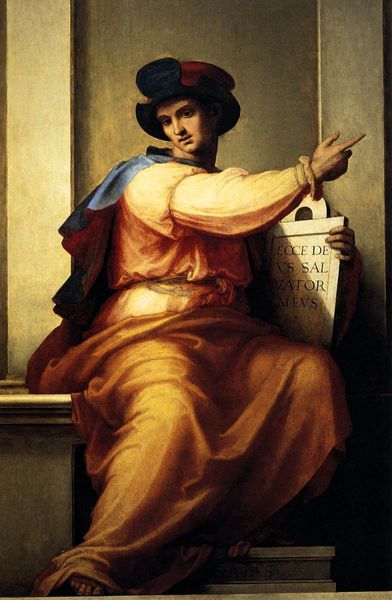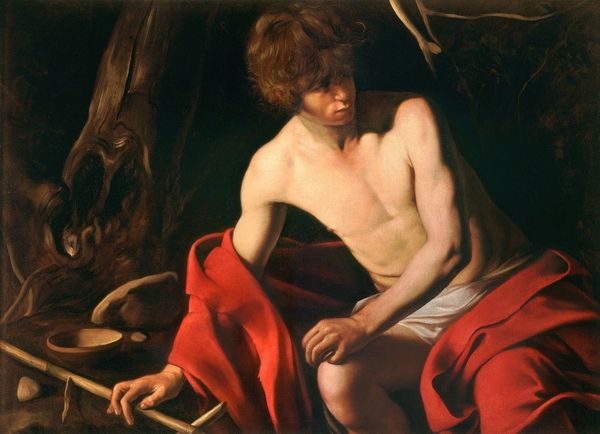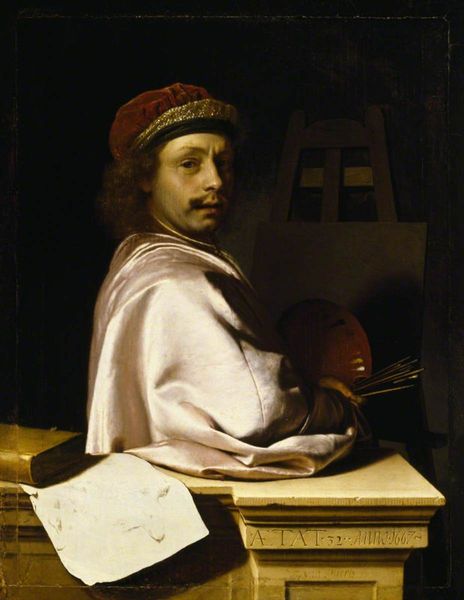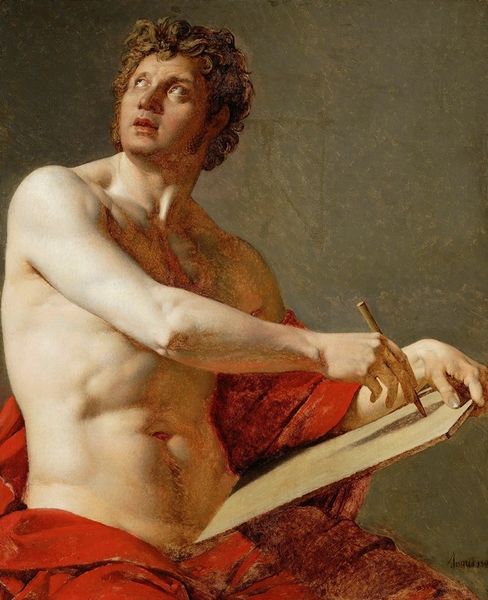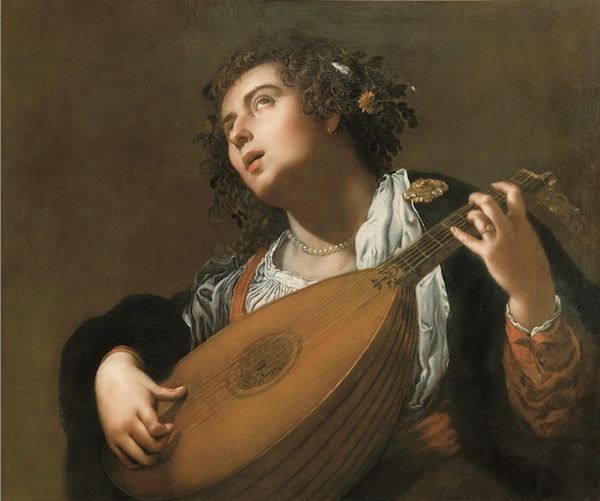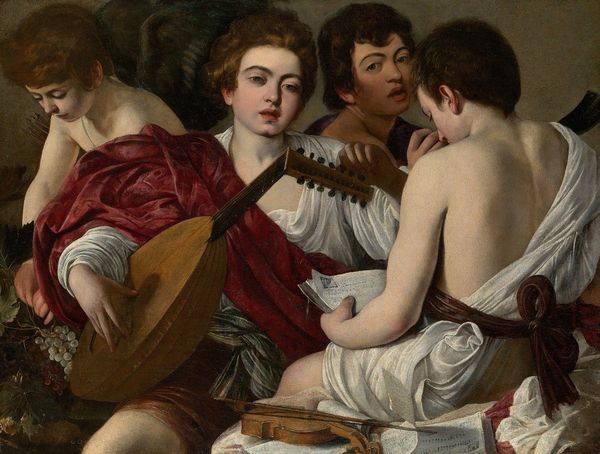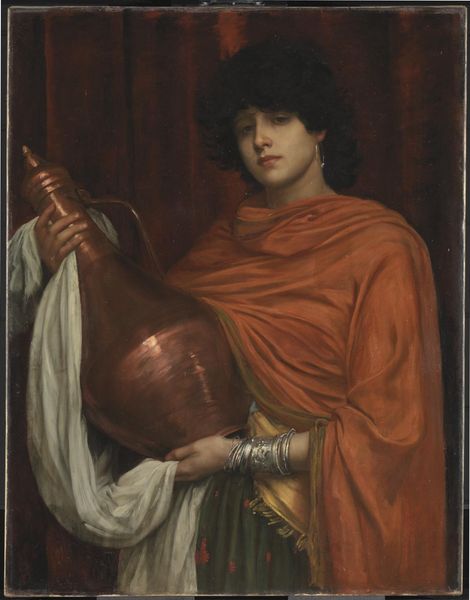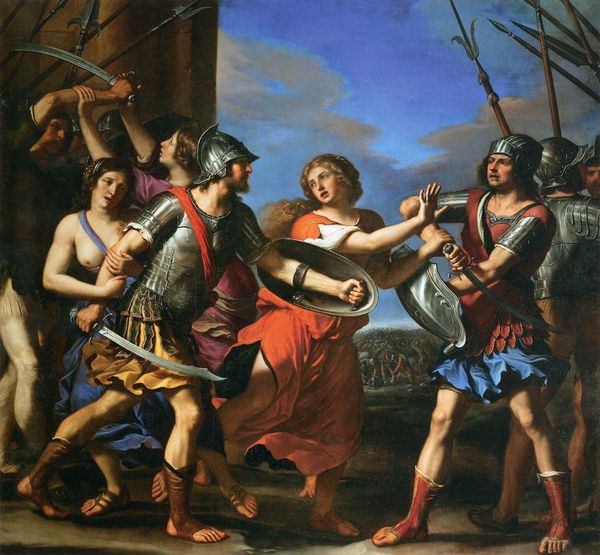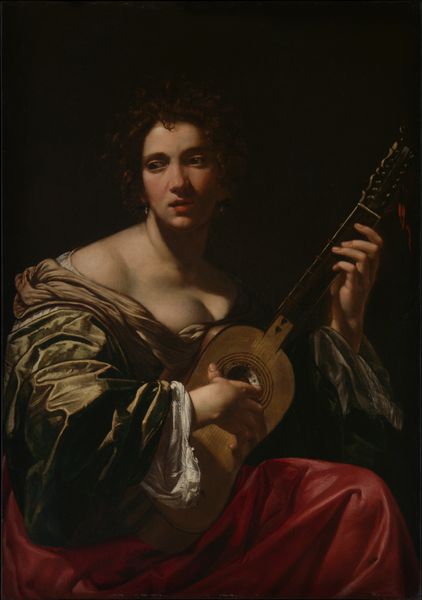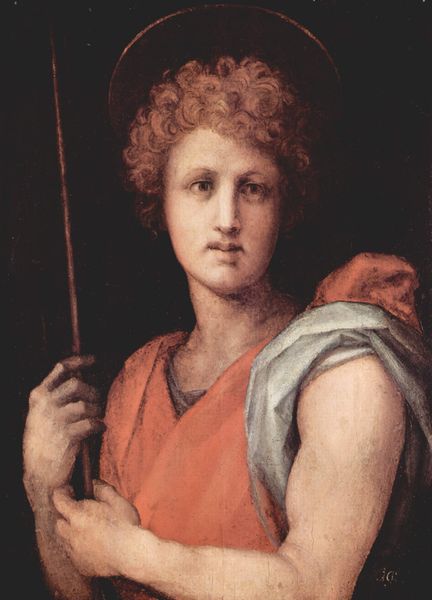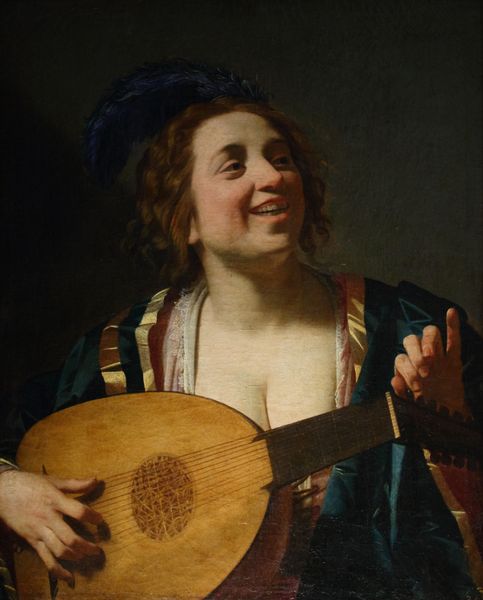
painting, oil-paint
#
portrait
#
allegory
#
narrative-art
#
painting
#
oil-paint
#
landscape
#
classical-realism
#
figuration
#
romanticism
#
mythology
#
history-painting
#
academic-art
Copyright: Public Domain: Artvee
Johann Peter Krafft painted “Orpheus at the tomb of Eurydice” in the nineteenth century. Look closely at the red of Orpheus's cloak and blue of his hat; these colours are set against the darkness of the woods, creating an immediate sense of drama. The composition is structured to lead the eye from Orpheus's face, down the curve of the lyre, to the hand which gently touches the strings. This line emphasizes the source of Orpheus's power – his music. Note how the artist has used light and shadow to sculpt Orpheus’s form, giving him a palpable, almost sculptural presence. The painting destabilizes established meanings through the visual pairing of Orpheus with his instrument. The lines of the lyre almost become an extension of his own body, underscoring how his identity and grief are inextricably entwined with his art. It is a powerful statement about art's capacity to express profound emotional and philosophical truths.
Comments
No comments
Be the first to comment and join the conversation on the ultimate creative platform.
